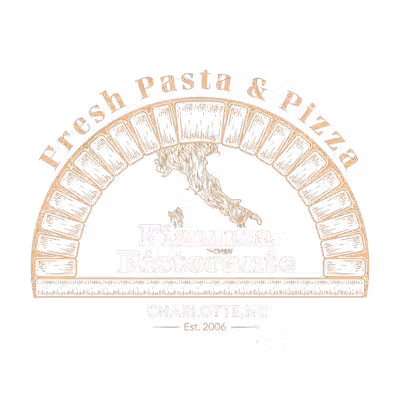RuRu's Tacos & Tequila Review in Charlotte
- Fagan Realty Group
- Aug 21, 2022
- 4 min read
Updated: Sep 27, 2024
For several years, we have been hearing about how great RuRu’s Tacos & Tequila is. Quite frankly, I was not that excited to go. Historically in Charlotte, we have not seen much difference in the taste and quality of “nice” Mexican restaurants compared to the less expensive places. And none of it has compared to the Mexican foodthat we have eaten at in the Southwest. So we’ve not made going to new Mexican restaurants much of a priority. But about a year ago, Beth went to RuRu’s and has been commenting ever since about how good it was.
RuRu's found its home at the historic Reynolds-Gormajenko House. Commonly referred to as “The Villa” amongst Charlotteans, the building is an excellent example of Tuscan Revival architecture dating back to 1925. The original estate was owned by Blanche Reynolds, a native of Durham NC, but then inherited by his wife upon his death in 1928. This fortune coupled with her aristocratic tastes, lively spunk, and the help of renowned NY architect William Lawrence Bottomley led Mrs. Reynolds to construct the only authentic Tuscan Villa in the Queen city. Although it's Mexican on the menu, RuRu's draws inspiration from Latin, Korean, American and Greek fare, and the kitchen begins each recipe with the integrity of using only pure and simple ingredients.
So finally, when our niece, Maranda, was visiting from Ann Arbor, Michigan, we decided to give it a try. The weather was really pleasant for a summer evening, so we chose to sit outside on the large patio which has lots of seating and an outdoor bar.
Since tequila is one of the things that RuRu’s is known for, I decided to try one of their margaritas. They had many varieties of the drink. I'm largely a fan of the more traditional type, so I ordered the Mortimer Duke which was simply fresh-squeezed lime juice, tequila, triple sec, & agave syrup over ice with salt on the rim of the glass. It was delicious.
We started out with some chips and salsa. The chips are homemade and are a little thicker than we like but they were good nonetheless. The salsa was homemade and was quite tasty.
They also have several different tacos from which to choose. All of us had a Vegas Baby Vegas which is seared ahi tuna, asian slaw, cucumber, wasabi crema, and cilantro. This was delicious and I could have eaten a couple of more. But we did want to try a few other choices. So Maranda had the I’ll Have What She’s Having which was grilled mahi mahi, lettuce, avocado, pineapple, and cilantro. Beth chose the You’re Going The Wrong Way. This had marinated chicken, avocado, lettuce, cilantro, pico, and chipotle aioli. I decided to have the It Was The Dukes which had pork belly carnitas, slaw, diced onions, cilantro, and salsa verde. We liked all of them.
Because you can get any of the tacos on a flour or corn tortilla, that led us to wonder how the two different types of tortillas came about. The corn tortilla was first developed in Mexico, during prehistoric times. It was made from hominy which is created by using dried maize (corn) kernels with lime in a process called nixtamalization. The lime was produced by toasting freshwater shells over a fire for several hours. The maize was then washed to remove the bitterness produced by the lime. Corn tortillas became a staple carbohydrate in North American and Mesoamerican cultures. They predate their derivative, the wheat flour tortilla (tortilla de harina or tortilla de trigo), in all such cultures. This is because old world wheat was neither known nor grown in the Americas prior to European colonization. The flour tortilla is a variant of the corn tortilla. The word tortilla comes from Spanish meaning "small cake". The oldest found tortillas date back as far as 10,000 years BCE and were made of native maize with dried kernels. The corn tortilla was the principal food of the Aztecs and other Mesoamerican civilizations. The flour tortilla is a much more recent invention.
It is said by some that flour tortillas originated in the northern Mexican states of Chihuahua, Durango, Sonora and Sinaloa, where the territory is more suited to growing wheat than corn. In recent times, they have become integral to Mexican American (most notably in the form of a burrito), Mexican—and Tex-Mex—cuisine. Mexican Americans talk about the flour tortilla having come from the wheat-filled plenty of the United States. Most often it is attributed to Alta California when California was still part of the Mexican Republic. Most specifically, it is credited to regions of Northern & Central California with the first mass-produced flour tortillas having come from flour tortilla factories in metropolitan Los Angeles. Some have even attributed the origin of flour tortillas to Jewish immigrants of the United States
I have to say that I was pleasantly surprised by our experience at RuRu’s. The food was very good and quite reasonably priced. If you go there, and we recommend that you do, be sure to park in the back behind the restaurant as that is where most of the parking exists, and the main entrance to the restaurant is located off of the parking lot.
And as always, let us know what you think if you go. We love hearing from our readers!





Comments